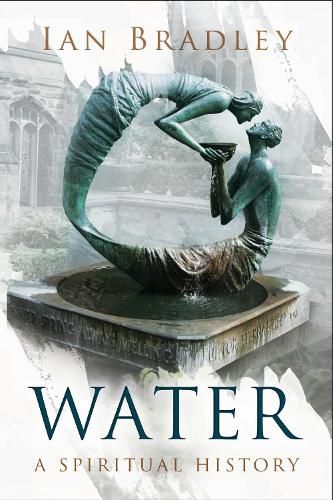Readings Newsletter
Become a Readings Member to make your shopping experience even easier.
Sign in or sign up for free!
You’re not far away from qualifying for FREE standard shipping within Australia
You’ve qualified for FREE standard shipping within Australia
The cart is loading…






Water has long been associated with the magical, the mysterious and the divine.
From sacred springs to holy wells, and from hydropathic cures and temperance reform to the modern spa, Ian Bradley explores how water’s creative, health-giving and restorative powers have been conceived, worshipped and marketed in an essentially spiritual way.
In pre-Christian times, springs and rivers were seen as the dwelling places of deities with magical life-giving and curative powers, associated especially with the feminine and with ritual cleansing and rebirth. With the coming of Christianity, water was incorporated into Christian ritual and tradition through baptism and the cult of holy wells. From the 16th century onwards, the benefits of water came to be seen more in terms of therapeutic healing than the miraculous. Through the development of drinking and bathing cures, spas and hydrotherapy, a more scientific but still essentially spiritual understanding of the curative properties of water was developed. By the eighteenth century, spas and watering places had acquired their own enchanted and mysterious qualities, in many ways taking the place of medieval pilgrim shrines. Now, a new, more hedonistic kind of pilgrim comes to modern spas to experience a potent post-modern elixir of self-oriented well-being.
$9.00 standard shipping within Australia
FREE standard shipping within Australia for orders over $100.00
Express & International shipping calculated at checkout
Water has long been associated with the magical, the mysterious and the divine.
From sacred springs to holy wells, and from hydropathic cures and temperance reform to the modern spa, Ian Bradley explores how water’s creative, health-giving and restorative powers have been conceived, worshipped and marketed in an essentially spiritual way.
In pre-Christian times, springs and rivers were seen as the dwelling places of deities with magical life-giving and curative powers, associated especially with the feminine and with ritual cleansing and rebirth. With the coming of Christianity, water was incorporated into Christian ritual and tradition through baptism and the cult of holy wells. From the 16th century onwards, the benefits of water came to be seen more in terms of therapeutic healing than the miraculous. Through the development of drinking and bathing cures, spas and hydrotherapy, a more scientific but still essentially spiritual understanding of the curative properties of water was developed. By the eighteenth century, spas and watering places had acquired their own enchanted and mysterious qualities, in many ways taking the place of medieval pilgrim shrines. Now, a new, more hedonistic kind of pilgrim comes to modern spas to experience a potent post-modern elixir of self-oriented well-being.